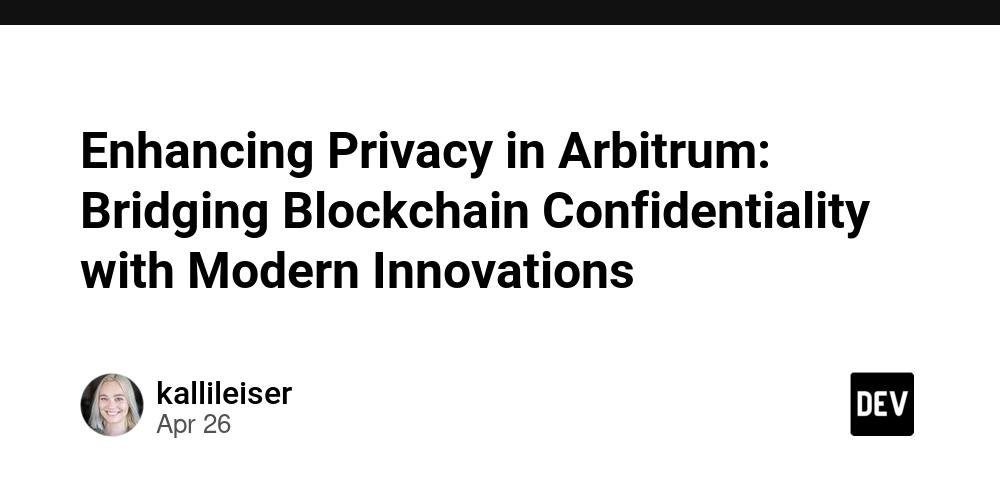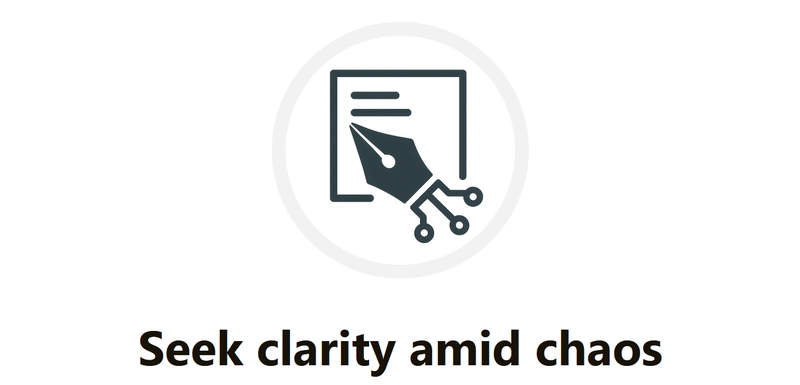Understanding and Navigating the Risks of Forking Open-Source Projects: Strategies for Sustainable Development
Abstract This post provides a comprehensive exploration of the risks associated with forking open-source projects and explains how careful planning, ethical considerations, and community-driven strategies can help mitigate potential pitfalls. It covers the background and context of project forking, details core concepts such as community fragmentation, maintenance challenges, legal and compatibility issues, and explores practical use cases and strategies to overcome these challenges. Finally, the post offers insights into future trends and innovations for a sustainable open-source ecosystem. Introduction Forking open-source projects allows developers to modify and evolve codebases, driving innovation and customization. However, forking comes with risks including community fragmentation, additional maintenance burdens, legal complexities, and potential resource misallocation. In today’s fast-paced software development landscape, understanding these risks is vital. Through clear explanations and interactive elements like tables and bullet lists, this post aims to provide technical experts and enthusiasts with actionable insights on how to successfully navigate the challenges of project forking. Background and Context What is Forking? In open-source software, forking is the process of copying an existing codebase to create a new, separate development project. It allows developers to experiment, add new features, or adjust the project to a specific use case. Often, forks arise from the honest goal of utilizing community-generated code in new ways; however, they can also introduce divisions within the developer community if not handled responsibly. Historical Perspective and Ecosystem Context The practice of forking became widely recognized with the rise of platforms such as GitHub. As communities grew and innovation accelerated, developers found opportunities to experiment with diverse ideas while relying on proven technology foundations. Today, many projects thrive on forks, while some struggle with the challenges of maintaining separate evolutions. This dynamic context underscores the importance of addressing risks from the outset. Importance of Community and Governance Community engagement is at the heart of open-source development. Successful open-source projects emphasize inclusive community engagement strategies, such as those outlined in the community engagement strategies guide. Equally important is establishing proper governance models—a topic explored by experts on decentralized governance in open source—to prevent splits and maintain a unified vision. Core Concepts and Features Forking offers flexibility and autonomy, yet introduces several key risk factors. 1. Community Fragmentation Risk: Forking can lead to a divided community where contributions, support, and shared knowledge become diluted. A split can adversely affect both the original and forked projects. Key Consideration: Encouraging open dialogue and coordinating efforts across variants Mitigation Strategy: Utilize community engagement strategies to keep lines of communication open and maintain collaborative efforts. 2. Maintenance Challenges Risk: Once a fork is created, maintaining an updated and secure codebase becomes a resource-intensive process. This is especially difficult for smaller teams or projects without robust funding. Suggested Actions: Embrace sustainable funding for open-source initiatives. Leverage volunteer contributions while acknowledging the impact of unpaid volunteer work in sustaining projects. 3. Compatibility Issues Risk: As different forks evolve, divergent APIs and dependencies can cause integration issues. These inconsistencies might discourage users and developers from adopting the fork. Best Practice: Follow coding best practices to ensure compatibility. Technical Approach: Adopting a modular architecture and integrating thorough testing protocols can help maintain coherence between different development paths. 4. Legal and Ethical Considerations Risk: Forking can create potential legal pitfalls including license violations, misattribution, or unintentional breaches of proprietary rights. Ethical dilemmas may also arise from credit misappropriation. Ethical Framework: Developers must navigate these challenges with an emphasis on ethical software development to preserve trust. Licensing Complexity: Learn from discussions on topics such as the downside of Apache License to avoid pitfalls. 5. Resource Allocation Risk: Forking tends to duplicate efforts, thereby potentially diluting investments in innovation and leading to inefficient resource allocation. Mitigation: Careful resource management guided by risk management strategies ensures that energy and time are spent effectively. 6. Risk of Obsolescence Risk: A fork may rapidly bec
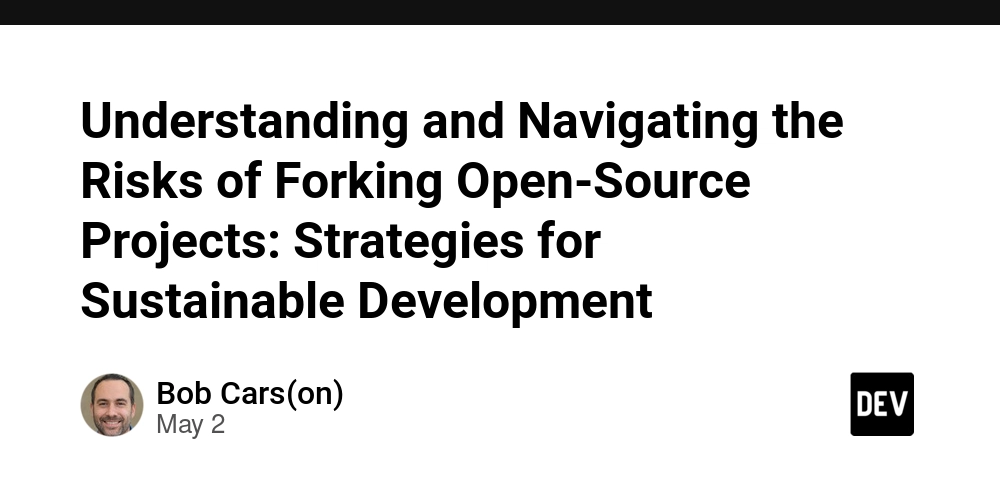
Abstract
This post provides a comprehensive exploration of the risks associated with forking open-source projects and explains how careful planning, ethical considerations, and community-driven strategies can help mitigate potential pitfalls. It covers the background and context of project forking, details core concepts such as community fragmentation, maintenance challenges, legal and compatibility issues, and explores practical use cases and strategies to overcome these challenges. Finally, the post offers insights into future trends and innovations for a sustainable open-source ecosystem.
Introduction
Forking open-source projects allows developers to modify and evolve codebases, driving innovation and customization. However, forking comes with risks including community fragmentation, additional maintenance burdens, legal complexities, and potential resource misallocation. In today’s fast-paced software development landscape, understanding these risks is vital. Through clear explanations and interactive elements like tables and bullet lists, this post aims to provide technical experts and enthusiasts with actionable insights on how to successfully navigate the challenges of project forking.
Background and Context
What is Forking?
In open-source software, forking is the process of copying an existing codebase to create a new, separate development project. It allows developers to experiment, add new features, or adjust the project to a specific use case. Often, forks arise from the honest goal of utilizing community-generated code in new ways; however, they can also introduce divisions within the developer community if not handled responsibly.
Historical Perspective and Ecosystem Context
The practice of forking became widely recognized with the rise of platforms such as GitHub. As communities grew and innovation accelerated, developers found opportunities to experiment with diverse ideas while relying on proven technology foundations. Today, many projects thrive on forks, while some struggle with the challenges of maintaining separate evolutions. This dynamic context underscores the importance of addressing risks from the outset.
Importance of Community and Governance
Community engagement is at the heart of open-source development. Successful open-source projects emphasize inclusive community engagement strategies, such as those outlined in the community engagement strategies guide. Equally important is establishing proper governance models—a topic explored by experts on decentralized governance in open source—to prevent splits and maintain a unified vision.
Core Concepts and Features
Forking offers flexibility and autonomy, yet introduces several key risk factors.
1. Community Fragmentation
Risk: Forking can lead to a divided community where contributions, support, and shared knowledge become diluted. A split can adversely affect both the original and forked projects.
- Key Consideration: Encouraging open dialogue and coordinating efforts across variants
- Mitigation Strategy: Utilize community engagement strategies to keep lines of communication open and maintain collaborative efforts.
2. Maintenance Challenges
Risk: Once a fork is created, maintaining an updated and secure codebase becomes a resource-intensive process. This is especially difficult for smaller teams or projects without robust funding.
-
Suggested Actions:
- Embrace sustainable funding for open-source initiatives.
- Leverage volunteer contributions while acknowledging the impact of unpaid volunteer work in sustaining projects.
3. Compatibility Issues
Risk: As different forks evolve, divergent APIs and dependencies can cause integration issues. These inconsistencies might discourage users and developers from adopting the fork.
- Best Practice: Follow coding best practices to ensure compatibility.
- Technical Approach: Adopting a modular architecture and integrating thorough testing protocols can help maintain coherence between different development paths.
4. Legal and Ethical Considerations
Risk: Forking can create potential legal pitfalls including license violations, misattribution, or unintentional breaches of proprietary rights. Ethical dilemmas may also arise from credit misappropriation.
- Ethical Framework: Developers must navigate these challenges with an emphasis on ethical software development to preserve trust.
- Licensing Complexity: Learn from discussions on topics such as the downside of Apache License to avoid pitfalls.
5. Resource Allocation
Risk: Forking tends to duplicate efforts, thereby potentially diluting investments in innovation and leading to inefficient resource allocation.
- Mitigation: Careful resource management guided by risk management strategies ensures that energy and time are spent effectively.
6. Risk of Obsolescence
Risk: A fork may rapidly become outdated if it fails to attract a strong user community or differentiate itself sufficiently from its parent project.
- Solution: Enhancing visibility with initiatives like open-source sponsorship and focusing on unique project advantages are crucial components for longevity.
7. Stifled Collaboration
Risk: Excessive forking can foster unhealthy competition, leading to silos rather than collaborative growth. This environment can dampen the spirit of open-source openness and shared development.
- Collaboration Strategies: Initiatives like community-driven projects help realign developer efforts towards collective improvements rather than fragmentation.
Summary Table: Risks vs. Mitigation Strategies
| Risk Factor | Description | Mitigation Strategy |
|---|---|---|
| Community Fragmentation | Division of community leads to reduced collaboration and sharing of knowledge | Employ robust community engagement strategies |
| Maintenance Challenges | High upkeep costs and resource demands for forks | Secure stable funding via sustainable funding for open-source and acknowledge unpaid volunteer work |
| Compatibility Issues | Divergent development causes API and dependency conflicts | Follow coding best practices and invest in continuous integration/testing |
| Legal/Ethical Issues | Risks of license violations and misattribution | Review licenses carefully; adhere to principles in ethical software development and the downside of Apache License |
| Resource Allocation | Duplication of efforts leading to inefficiency | Adopt proven risk management strategies to prioritize resource usage |
| Risk of Obsolescence | Without a unique value proposition, forks may fade away | Invest in community building and visibility through open-source sponsorship |
| Stifled Collaboration | Competitive rivalry overshadowing cooperative efforts | Foster inclusive development using models like community-driven projects and software project forking |
Applications and Use Cases
Forking has practical applications in various domains. Let’s explore two use cases that illustrate both the potential and pitfalls of forking.
Use Case 1: Customizing Software for Niche Markets
A small team may fork an open-source content management system to cater to a specific industry. They might modify the interface and add specialized modules tailored to that niche. However, this process requires them to:
- Maintain compatibility with the original software’s plugins.
- Allocate resources to actively maintain and update the fork.
- Engage their user community actively to prevent fragmentation.
By following software development craft principles, the team can implement effective testing strategies and code reviews that ensure their fork remains secure and stable.
Use Case 2: Enhancing Security Through Isolation
Large organizations may fork an open-source project to isolate critical functionalities and add custom security layers. This method allows them to mitigate vulnerabilities faster than waiting for upstream changes. Nevertheless, the forked version must be validated regularly to prevent divergent development that might lead to compatibility issues with mainstream updates.
-
Key Considerations:
- In-depth security audits
- Frequent integration of upstream fixes
- Clear documentation to aid future maintainers
Adopting a collaborative approach, as highlighted in the software project forking guide, helps maintain a balance between innovation and security.
Challenges and Limitations
While forking opens up numerous opportunities, navigating its challenges is a critical skill for open-source developers.
-
Technical Challenges:
- Keeping the fork aligned with original updates
- Managing code divergences
- Ensuring compatibility across evolving dependencies
-
Organizational Challenges:
- Coordinating between multiple development teams
- Securing long-term funding (as discussed in sustainable funding for open-source)
- Overcoming community inertia when an established user base is split
-
Legal and Ethical Limitations:
- Adhering to strict licensing terms
- Ensuring proper credit attribution
- Preventing disputes over intellectual property
These challenges require not only technical acumen but also strong project management and community-building skills.
Key Bullet List of Challenges
- Fragmented Community: Reduced collaborative efforts
- Complex Maintenance: High resource and budget demands
- Compatibility Risks: Divergent APIs causing integration issues
- Legal Pitfalls: License violations and attribution errors
- Resource Duplication: Inefficient efforts across multiple forks
Future Outlook and Innovations
Looking ahead, several trends and advancements promise to reshape how open-source forking is approached:
1. Enhanced Tooling for Fork Management
Future development environments will likely integrate automated tools that continuously merge critical upstream changes into forks. These tools will minimize conflicts and ensure that forks remain secure and up-to-date.
2. Blockchain and Tokenization for Sustainable Funding
Blockchain technology is paving new paths for funding open-source projects. Tokenization models, as briefly discussed in articles on open-source funding for community projects, could enable micro-sponsorships and decentralized grant systems. This innovative funding model can ensure a steady income stream to support maintenance and development.
3. Improved Licensing Models
Innovative licensing models that balance the need for open collaboration with the protection of intellectual property will become more prevalent. New licenses and frameworks, such as those explored in software project forking and discussions on ethical software development, promise greater clarity and reduced legal risk.
4. Community-Driven Governance
Governance models in open-source projects will increasingly adopt decentralized structures. Models that encourage active participation through consensus mechanisms and transparent decision-making—much like the decentralized practices discussed on decentralized governance in open source—will help in managing forks more harmoniously.
5. Cross-Platform Collaboration and Interoperability
As ecosystems evolve, improving interoperability between different forks and projects will become essential. Efforts to standardize APIs and protocols will reduce fragmentation and foster a healthier, collaborative development environment.
Best Practices for Forking Projects
To reduce risks and maximize benefits, here are some best practices:
Evaluate the need to fork:
Before forking, consider if contributing to the original project might produce better outcomes.Communicate with the community:
Maintain transparency with the user base through forums, meetings, and clear documentation.Plan for long-term maintenance:
Outline a maintenance strategy and secure funding, potentially through open-source sponsorship or similar initiatives.Implement robust testing:
Rigorously test compatibility and security with continuous integration practices.Review legal implications thoroughly:
Consult legal experts and adhere closely to the licensing policies of the original project.
Integration with Dev.to and Industry Insights
Industry experts have weighed in on topics related to forking and funding open-source projects. For instance, bridging the gap in open-source funding workshops for developers offers insight into educating developers on sustainable practices. Additionally, discussions like navigating the dynamics of software project forking in open source provide real-world perspectives on managing forks effectively. Such resources help contextualize the broader impact of forking decisions and support informed decision-making.
Summary
Forking is a powerful mechanism that underpins innovation in open-source software but brings significant challenges. By understanding risks such as community fragmentation, maintenance overhead, compatibility issues, legal concerns, and resource misallocation, developers and stakeholders can better navigate the complexities involved.
Key takeaways include:
- The need for open communication and strong governance.
- The importance of securing funding and planning maintenance.
- Adopting robust coding practices to ensure compatibility and security.
- Utilizing emerging innovations, such as blockchain-based funding and improved licensing models, to sustain forking projects.
Developers must assess the purpose behind a fork, communicate regularly with their communities, and adopt best practices to ensure that their efforts lead to sustainable growth rather than fragmentation.
By integrating knowledge from resources like the Original Article on forking project risks and expert insights from various authoritative sources, stakeholders can contribute to an ecosystem where innovation thrives under a structured, ethical, and collaborative environment.
Final Thoughts
Forking open-source projects is neither inherently positive nor negative—it is a tool that, when used wisely, spurs creativity and drives tailored solutions to real-world problems. With thoughtful planning, adherence to best practices, and continuous engagement with the community, developers can mitigate risks while reaping the rewards of diversification and innovation.
By staying informed through resources such as sustainable funding for open-source, engaging in ethical software development, and drawing from community insights found on platforms like Dev.to, the future of forking in open-source looks promising and sustainable.
Embracing the risks and rewards of forking with open eyes and committed strategies is key to a thriving, innovative open-source future.





































































































































































![[The AI Show Episode 145]: OpenAI Releases o3 and o4-mini, AI Is Causing “Quiet Layoffs,” Executive Order on Youth AI Education & GPT-4o’s Controversial Update](https://www.marketingaiinstitute.com/hubfs/ep%20145%20cover.png)












































































































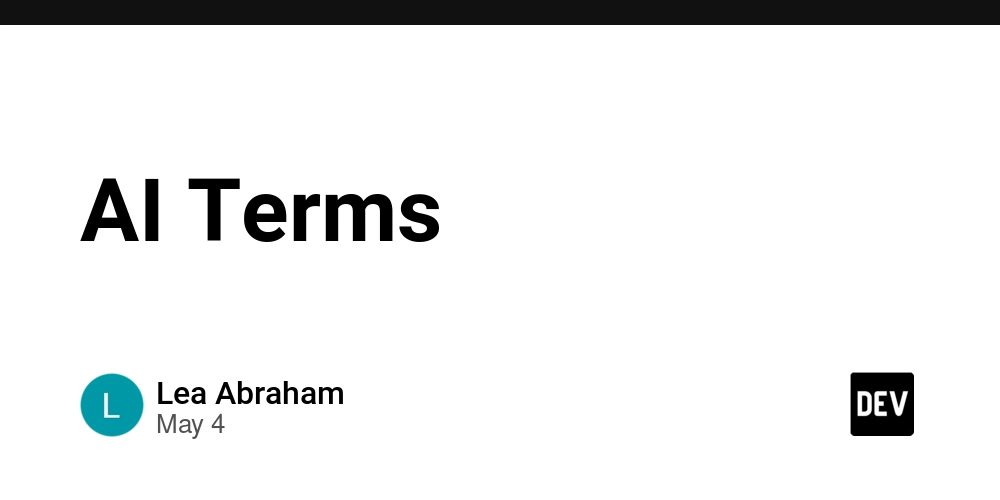


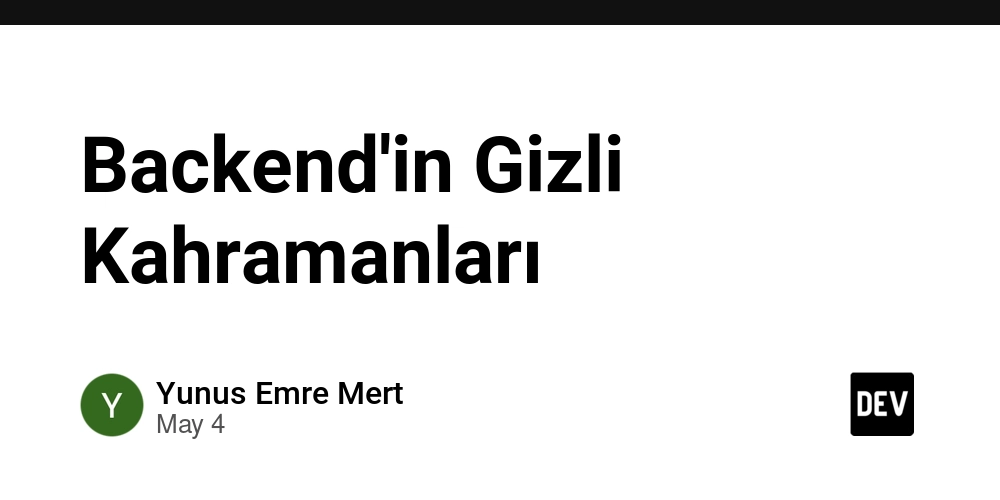













![[FREE EBOOKS] Learn Computer Forensics — 2nd edition, AI and Business Rule Engines for Excel Power Users & Four More Best Selling Titles](https://www.javacodegeeks.com/wp-content/uploads/2012/12/jcg-logo.jpg)





![From Art School Drop-out to Microsoft Engineer with Shashi Lo [Podcast #170]](https://cdn.hashnode.com/res/hashnode/image/upload/v1746203291209/439bf16b-c820-4fe8-b69e-94d80533b2df.png?#)






































































































(1).jpg?#)
































_Inge_Johnsson-Alamy.jpg?width=1280&auto=webp&quality=80&disable=upscale#)











































































































![Apple to Split iPhone Launches Across Fall and Spring in Major Shakeup [Report]](https://www.iclarified.com/images/news/97211/97211/97211-640.jpg)
![Apple to Move Camera to Top Left, Hide Face ID Under Display in iPhone 18 Pro Redesign [Report]](https://www.iclarified.com/images/news/97212/97212/97212-640.jpg)
![Apple Developing Battery Case for iPhone 17 Air Amid Battery Life Concerns [Report]](https://www.iclarified.com/images/news/97208/97208/97208-640.jpg)
![AirPods 4 On Sale for $99 [Lowest Price Ever]](https://www.iclarified.com/images/news/97206/97206/97206-640.jpg)
































![[Updated] Samsung’s 65-inch 4K Smart TV Just Crashed to $299 — That’s Cheaper Than an iPad](https://www.androidheadlines.com/wp-content/uploads/2025/05/samsung-du7200.jpg)

































































